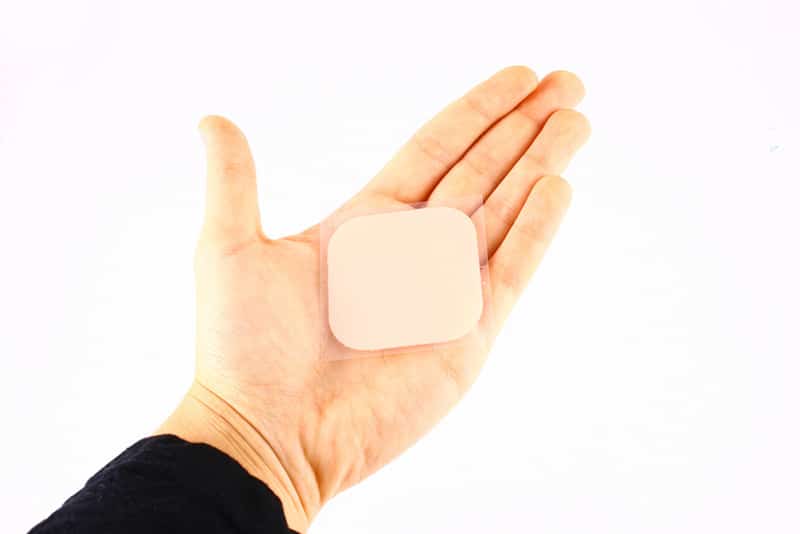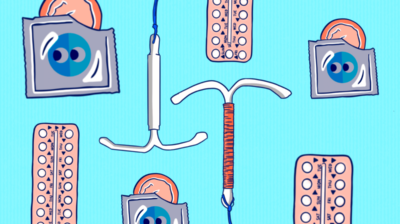What is the contraceptive patch?
Find out more about the patch and how it is used to prevent pregnancy

The contraceptive patch is a small, thin patch (like a plaster) that releases hormones through the skin to prevent pregnancy. The patch is extremely effective if used correctly. It’s important to remember that the patch does not protect from Sexually Transmitted Infections (STIs). Always use a condom to reduce the risk of STIs.
The patch is free for 17- to 35-year-olds in Ireland. You will need a prescription to get it, so speak to your doctor to find out if this is the right contraceptive for you.
How does the patch work?
The patch contains the hormones oestrogen and progestogen, which are absorbed through your skin, to prevent pregnancy. These are the same hormones that are found in the combined pill, and they work in the same way by preventing your body from releasing an egg during ovulation. It also stops sperm from meeting up with the egg if an egg is released.
Can I use the patch?
The patch is not suitable for everyone. In particular, it is not suitable for those who:
- Have a history of blood clots
- Have very high blood pressure
- Have suffered a heart attack
- Have had gynaecological cancers
- Uncontrolled diabetes
- Are breastfeeding a baby younger than six weeks
- Smoke and are 35 or over
- It is less effective for those who are over 14 stone
If the patch isn’t suitable for you, talk to your doctor about alternative methods of contraception.

How to use the contraceptive patch
The patch can be worn on most parts of the body (upper arms, shoulder, bum). It’s best to choose a spot that is clean, dry, and has less hair. It doesn’t need to go on the same place every time.
Each patch lasts one week. You will need to replace the patch every seven days. You have the option of a seven day patch-free week, but new guidelines suggest that you can skip the patch free week entirely, or just take a four day break, if that’s what you prefer. Talk to your doctor about your options when getting your prescription
If you take a break, you may experience some withdrawal bleeding, similar to your period. This doesn’t happen for everyone. When your break comes to an end, you can put on a new patch even if you are still bleeding.
How long does it take to work?
It is recommended that when you’re starting for the very first time, you wear your first patch on the first day of your period in order to be protected straight away. If you start wearing the patch any other day, it will take seven days and so it is recommended to use another form of contraception, like a condom, during this time.
Talk to your doctor about when to start and how soon it will take to work.
What if the patch falls off?
The contraceptive patch is very sticky and so it’s unlikely that it will fall off, and it is safe to shower or go swimming while wearing the patch. However, if this does happen, then put on a new patch right away. If it has been off for less than 48 hours, you are still protected so long as you have been using it correctly up until now, and you can continue to change it on schedule.
If it’s been off for more than 48 hours, then another type of contraceptive (like condoms) is needed for the next seven days. You will also need to start a new patch cycle with the replacement patch as your first day. If you had unprotected sex and your patch was off for more than 48 hours, then you may need emergency contraception.
What to do if you forget to change your patch
If you forget to change your patch, replace it with a new one as soon as you remember.
If it has been less than 48 hours
Once you put on your new patch you can continue to use it as normal and change it on schedule. You are still protected so long as you have been using it correctly up until now.
If it has been more than 48 hours
If it has been more than 48 hours, you’ll be starting a new cycle when you change your patch. The day you replace the patch will now be the beginning of week one, and you will have a new change day. Another type of contraceptive (like condoms) is needed for the next seven days, and If you had unprotected sex and your patch was off for more than 48 hours, then you may need emergency contraception.
Forgetting to start your patch free week
If you forget to take off your patch at the end of week three, take it off as soon as you remember. In order to stick with your schedule, you can replace it on your usual start day, instead of waiting a full week, even if you’re still bleeding.
Forgetting your patch after your patch-free week
If you forget to put your patch on when originally scheduled, put it on as soon as you remember. This will be the beginning of week one, and you will have a new change day and schedule.
It’s a good idea to use additional protection like condoms for the next seven days to reduce the risk of pregnancy if you forgot to replace the patch after your patch-free week.
Benefits of the contraceptive patch:
- The patch is easy to use
- It won’t interrupt sex as you are already wearing it
- You only need to replace the patch once a week rather than every day
- Your periods may become lighter and less painful
- If you are vomiting or have diarrhoea, it doesn’t affect the contraceptive, unlike the pill
- You can wear it when swimming, exercising or showering
Things to keep in mind:
There are some side effects that come with using the patch, including:
- Headaches
- Migraines
- Dizziness
- Nausea
- Tender breasts
- Vaginal infections
- Bleeding between periods
- Mood swings
- Putting on or losing weight
These side effects may settle down but if they continue for more than a few months, contact your doctor.
Some other things to keep in mind include:
- It doesn’t protect against sexual transmitted infections, so you will need to use a condom in order to reduce your risk
- For some people, the patch can cause skin irritation – try putting it in a different place when you change over if this is a problem for you
- Some medications might prevent the patch from working properly – always consult with your GP when starting new medication
- The contraceptive patch is more expensive than taking a contraceptive pill
- There is some evidence that the patch is not as effective for those who weigh more than 90kg, which is just over 14 stone
Protecting your sexual health when on contraception
If you chose to go on the patch, this will only help prevent pregnancy, but you will still need to protect yourself from STIs and HIV. There are many great options to help protect your sexual health, but none of them are 100% effective. Even if you use condoms every time you have penetrative sex, you are still at risk of getting genital warts and herpes, as these can be passed through skin-to-skin contact. Going for an STI check or taking a home STI testing kit with a partner before having sex, can be a great way of protecting yourself and those you have sex with against STIs and HIV. However, not all STI checks check for all STIs, so it is important to speak to your healthcare provider and ask them what are being tested for as part of your screening.
Discussing with your sexual partners the type of contraception or protection options available to you, and agreeing on a type that works for everyone involved can help to reduce the risk of pregnancy, STIs and HIV. Looking out for sores or symptoms on a partner’s genitals before having sex with them, can help to identify STIs that they may not be aware of. If you do see any signs that someone may have an STI, do not have sex with them until you know for certain it is safe to do so. Asking someone about their sexual health history is the responsible thing to do before having sex, and it should not be taken as an insult if someone asks you about yours.
Remember: The age of sexual consent in Ireland is 17. If you’re over 16, you can consent to medical treatment including any treatment or tests needed.
Feeling overwhelmed and want to talk to someone?
- Get anonymous support 24/7 with our text message support service
- Connect with a trained volunteer who will listen to you, and help you to move forward feeling better
- Whatsapp us now or free-text SPUNOUT to 50808 to begin.
- Find out more about our text message support service
If you are a customer of the 48 or An Post network or cannot get through using the ‘50808’ short code please text HELLO to 086 1800 280 (standard message rates may apply). Some smaller networks do not support short codes like ‘50808’.






